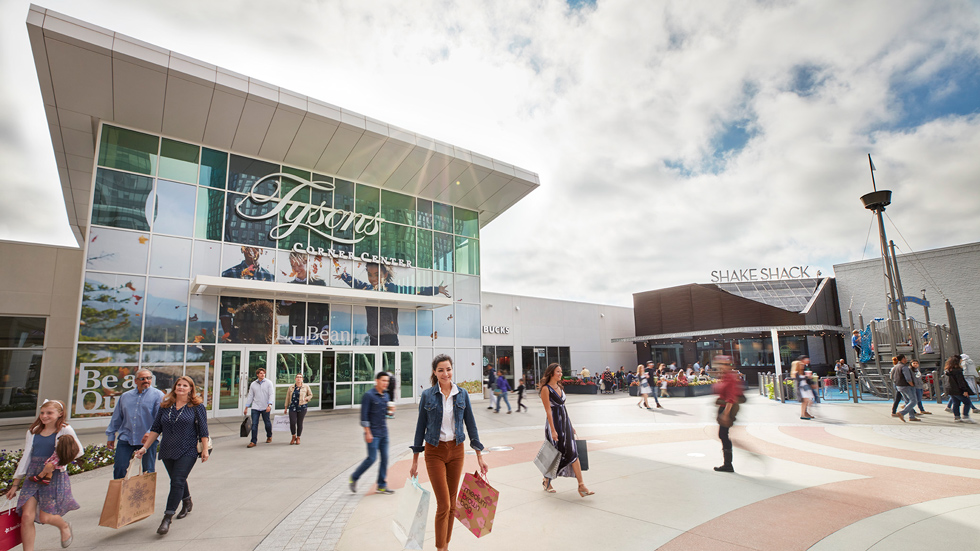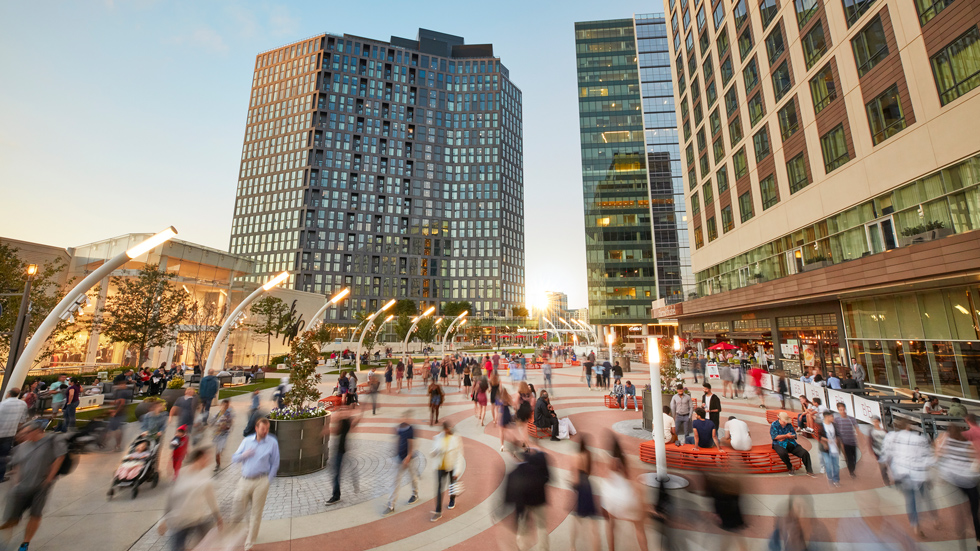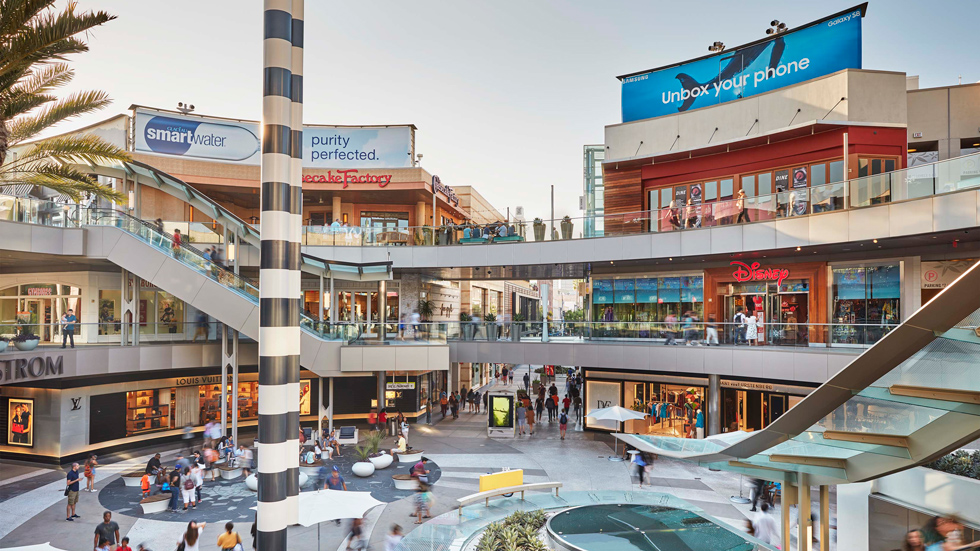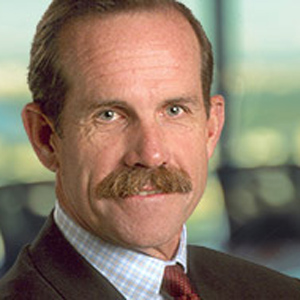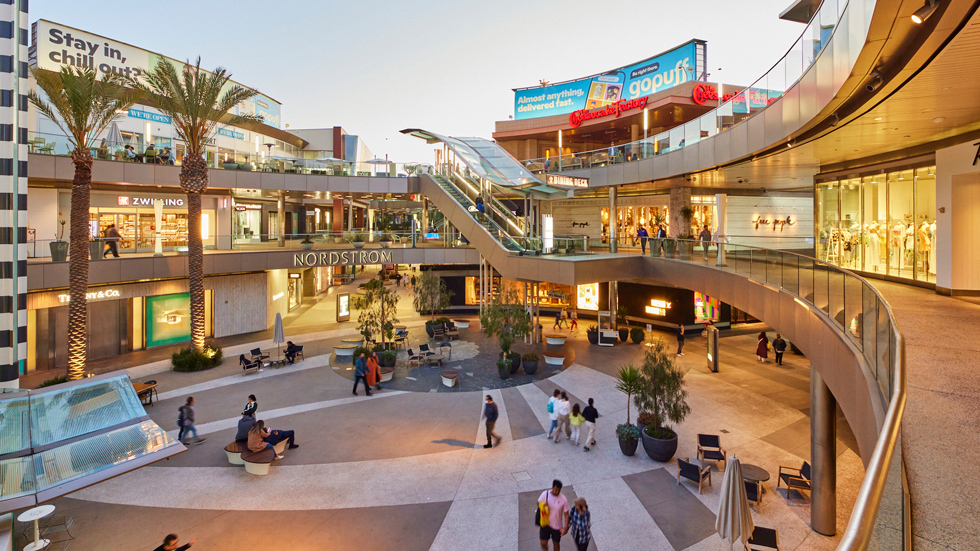Tom O’Hern first met the Macerich (NYSE: MAC) team in 1987 when he was working for another mall company, The McDonald Group, that was selling its portfolio. Macerich was one of the companies that bid on that portfolio. A few years later, he joined the company as CFO to form a REIT and take it public. Now, 30 years later, O’Hern is at the helm and has seen Macerich through major transitions and growth.
O’Hern was on the leadership team when Macerich went public in 1994 as an UPREIT, which gave the company greater access to capital. Many REITs in that era entered acquisition phases, and real estate companies and assets that were formerly in private hands transitioned into public hands.
“Over the course of 29 years, we’ve refined our portfolio, sold our lower-quality assets, bought better assets, and reinvested in our top assets,” O’Hern says.
Today, O’Hern talks about “densifying and diversifying” Macerich’s operations in its markets across the Northeast, Pacific Northwest, California, and Arizona. “We’ve got a tremendous portfolio of assets and they keep getting better,” he says.
During the early pandemic in 2020, some of Macerich’s locations in California were closed for eight months, but O’Hern says “we battled through that and we’re on the other side of that. We’re doing extremely well.”
A nine-time Ironman Triathlon competitor—plus various other ultra-distance events such as a double crossing of the Grand Canyon, the Western States 100-Mile Endurance Run, and running to the top of Mount Whitney—O’Hern and his wife even rode a tandem bike from San Francisco to L.A. on their honeymoon. He says being active became a part of his family’s lifestyle and that photos of him crossing the finish line at Ironman races with his children in his arms still decorate his office today. But, he adds: “Just for the record, I don’t do them anymore.”
O’Hern recently spoke with REIT.com about how retail has rebounded since the pandemic, the importance of community involvement, and what makes a “town center” different from a mall.
You had familiarity with Macerich in the 1980s working in the mall industry, but how did you end up working there?
Macerich first approached me in 1992. I knew the people. I liked the people. I liked the portfolio. It was at a time that the UPREIT had just been invented and that was a tax efficient way for real estate companies to go public. It was an exciting time. From 1992-1994, there were probably about 200 companies that ultimately ended up going public as UPREITs, so part of the allure was an IPO and all that access to capital. It was a very, very interesting time in our business.
What do Macerich’s operations look like today?
We have 44 centers in the Northeast, Pacific Northwest, California, and Arizona, which are all strong markets with good demographics. We like to call them “town centers” rather than malls. In addition to increasing net operating income every year, we also try to densify and diversify those assets by adding things that generate interest and traffic that aren’t what you might think of as traditional retail.
So, less apparel—and more food and beverage, entertainment, health, fitness uses, hotels, and occasionally co-working. We’ve done residential, and we’re doing a lot of things that we really didn’t do much of 10 or 15 years ago. When we add a Lifetime Fitness, for example, we can generate member visits to the site of 5,000 to 6,000 per week, so all of a sudden, you’ve got all that new traffic, energy, and activity.
That’s what we’re doing today in every location that we can, and each one is somewhat unique. In one place, it might make sense to have a hotel on the perimeter of the town center. In other places, it might make sense to have multifamily on the second level or build a multifamily residential tower in what had been a surface parking lot. It’s all about densifying and diversifying, and we’re fortunate to be in great markets.
When people in the Washington, D.C., area say they’re “going to Tyson’s,” they mean they’re going to your property, as opposed to just getting off at the Metro stop with the same name. What does that say about the ability of a property to define a community?
That’s really a prime example of what a Macerich town center is. You can get there on public transportation, there’s a hotel there—the Hyatt is at Tyson’s Corner in Virginia—we have a residential tower, we have an office tower, we have entitlements to do more mixed-use, which we’re planning on, and you’ve got two million square feet of great retail with a lot of food and beverage choices. The center just keeps getting better.
That’s what we try to do across our portfolio: make our properties more productive in terms of tenant sales, traffic, and rent, and of course, make them interesting. Tyson’s is a great example of that.
What’s a recent example of an interest-generating “add-on” to one of your town centers that’s been particularly exciting for the company?
We had a vacant theater at the top of Santa Monica Place, a three-level property in Santa Monica, California, just down the street from our headquarters. We had a variety of things that we could have brought in to replace the theater but concluded that one of the most interesting and best uses was the Arte Museum, which will go on the third level of Santa Monica Place in the old theater location. It’s a digital museum that comes from South Korea, and there’s only one other location in the U.S. in Las Vegas.
The museum estimates that at our Santa Monica location, they’ll have 1 million visitors per year. That’s a lot of people coming to our shopping center and hopefully cross-shopping and dining. Ten years ago, or even pre-COVID, no one would have thought of having an immersive digital museum in a mall. There are just so many new and interesting uses today.
What do you think are the biggest influences for why your portfolio, and maybe retail shopping centers in general, are continuing to evolve?
People are social and COVID has forced us to come to grips with that. Everyone shopped online during the pandemic because they had to, but I think most people would say they like the in-person experience and are looking for a pleasant, enjoyable experience when they go shopping. Shopping centers are able to come in and add good food and beverage that’s interesting and gives people options beyond shopping. It helps bring more people together, create more energy and excitement, and people enjoy it. We’ve seen that. Once we were able to reopen after COVID, the consumer came back with a vengeance—and not just shopping, but enjoying being out and amongst people.
Our sector was hit very hard during COVID, particularly mall-based retail. We’re not quite to pre-COVID occupancy, which is 94%, but we finished 2022 at 92.6% occupancy and our tenant sales are in excess of pre-COVID levels. Traffic is about 95% of pre-COVID traffic, so the consumer is back, and our business is back. A-quality malls in general are doing quite well.
How does Macerich approach involvement with your local communities? What’s important to the company about playing a role in its communities?
We try to be the economic and social engine of our communities. Typically, our centers are named after the city they’re in, like Santa Monica Place or Tyson’s Corner Center (in Virginia), for example. We try to be part of the community in a lot of respects. We believe in giving back to the communities that we’re in, and we encourage our people to do so as well. Not everyone can contribute resources, but people can contribute time.
We put a Macerich volunteer program in place 15 years ago that allows people to work for a local charity through up to 24 hours of paid time. They can pick the charity of their choice, and we encourage people to do that. We find that people really enjoy it and most people use those hours to give back to the community, so it’s a big part of what we’re about. We try to support the public school systems across our communities as well.
You’re very active in the Torrance Memorial Community. Why is it a passion, and what are some of your personal community-involvement goals?
Torrance Memorial is a local community hospital in the South Bay area of Southern California. It’s a great asset to our community, and I had the opportunity to be part of their foundation board. I was very happy to do that because I’ve been blessed in my life. I believe in giving back, and I encourage others to give back. The best way to do that is to lead by example, so I happily participate as a member of their board. A great hospital is an incredible thing to have in anyone’s community. We particularly saw that as we all battled through COVID.
As a result, that’s one of the charities of my choice. Not just for donating money, but also for donating my time. Torrance Memorial actually just launched a capital campaign to expand the emergency room because a lot of hospitals have gone out of business in the last 10 years. For the hospitals that remain, there’s a greater demand on their emergency rooms, which frankly we can all relate to. No matter how young or old you are, you’ve probably had some experience with an emergency room. I’m happy to be part of that and have participated in a lot of other community-based charities in the South Bay.
What’s some of the best advice that you’ve received during your career that’s helped you get to where you are?
The best advice I ever got goes back to the early 1980s. Gordon McDonald, who started the McDonald Group, was probably my first mentor. He said: “Surround yourself with great people. Be among quality and talented people, and good things will happen.”
He was absolutely right. It’s not always the opportunity that pays the most, and it’s not always about the location. It’s about the quality of the people that you surround yourself with, because that’s who you’re going to learn from and that’s who you’re going to be associated with. It’s good advice that I’ve followed, and I’ve passed that along to others when I’ve had the opportunity.
You’re a nine-time Ironman Triathlon competitor. What lessons from physical achievements have crossed over into your personal or business life?
It was a while ago, but I did ultra distance racing and triathlons for about 25 years. It was fun and took me to some great parts of the country. Probably the toughest thing I ever did was something called the Western States 100. It’s a 100-mile run between Squaw Valley and Auburn through the Lake Tahoe Mountains with 48,000 feet of elevation change.
It takes a certain level of toughness and determination to do those physical feats. As we were battling through COVID and the uncertainty of what would face us next, in trying to inspire my team of leaders, I kept thinking about the enormity of the task running the Western States 100. If you thought about all of it at once, it would be overwhelming. So, I just thought about one hill at a time; I thought about the next hill that was in front of me. That’s the way we approached COVID—one hill at a time. It definitely prepared me mentally to hang in there.
I’m not doing Ironmans anymore, but I still work out every single day and try to stay healthy, live a healthy lifestyle, and set a healthy example.
What do you see ahead for the retail sector? How is Macerich working to meet the evolving needs of tenants and customers?
People want to be entertained. They want to go someplace that they enjoy. It’s not just about going in and buying apparel anymore. It’s a little bit of everything. Go there, be entertained, have a good meal, make it interesting and exciting. For us, it’s all about densification and diversification. We’re blessed with an A-quality portfolio, and we’ve got opportunities to offer that to consumers throughout our portfolio.
Currently, we’re doing multifamily units at Kierland Commons in Phoenix. We’re adding multifamily to our property in Flatiron Crossing in Broomfield, Colorado. It’s all about making the properties more productive. The way you do that is you bring in retailers who are more productive with higher sales per foot, and you bring in uses that bring in a lot of people and energy.
That’s really the direction things are going. If you talk to the A-quality mall operators like Simon and Westfield, we’re all trying to put in interesting, exciting traffic-generating uses that benefit the rest of the property. We’ve done a lot of that even during COVID, and there’s going to be more. It’s just a very exciting time in our business. We’re seeing leasing activity, for example, that’s in terms of volume and diversity of uses that we haven’t seen since before the great financial crisis. In terms of diversified uses, we’ve never seen anything like this as a sector. It’s exciting to be part of it.
How does all of that lead in or influence Macerich’s goals over the next five or 10 years?
As we look at our portfolio, we’re always looking for assets where we have the opportunity to create a town center. So, it’s more than just a mall; it’s more than just shopping. We’ve always been opportunistic buyers and sellers of assets, but I think over the next five to 10 years, we’ll probably dispose of assets that we either consider non-core or they don’t have the same opportunity to densify and diversify, just because of their structure or location.
When we acquire assets, we’re going to be acquiring assets where we think we can change the uses or the mix and make it more exciting, generate more traffic, add office—things like that. That’s the direction you will see Macerich going as the years go forward.
